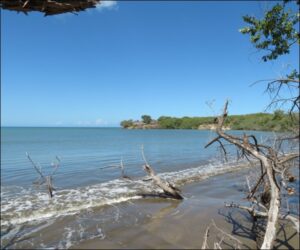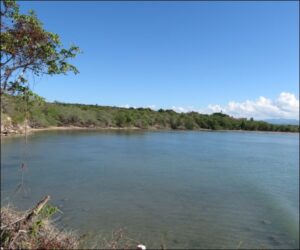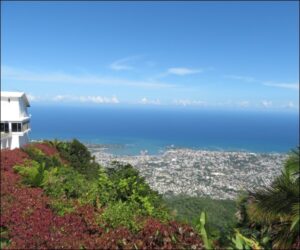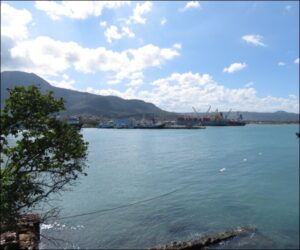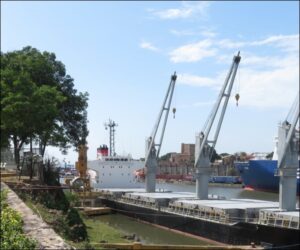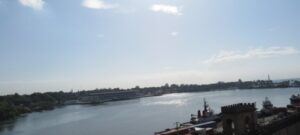In early 1496 (528 years ago), Columbus prepared to return to Spain in the Niña and India to defend himself from the investigator Juan Aguado’s criticisms, as well as haul Chief Caonabó to submit in person to Queen Isabella and King Ferdinand. Columbus had decided to abandon Isabela for a better site—hopefully closer to the arroyos near the Jaina River on the southern side of “Española,” where gold deposits had been found. Among other departure preparations, he authorized his brother Bartolomé to locate and establish “New Isabela” while he was in Spain.
As depicted in Columbus and Caonabó, the site at Isabela had been selected in 1493 partly because adverse winds and storms then prevented Columbus from reaching a better natural harbor farther east, including that at the modern Puerto Plata, which he’d sighted on his first voyage. See posts of December 3, 2021 (search-for-permanent-base-for-conquest) and January 1, 2022 (selection-of-permanent-site). While Isabela possessed a promontory defensible from “Indian” attack, a fulsome water supply in the Bajabonico River, and a cove sheltering from the prevailing easterly winds, the water supply was distant from the promontory and the cove didn’t protect from northerly or westerly winds, with the result that ships harboring there now had sunk in two hurricanes.
Columbus decided that while sailing to Spain he would leave Bartolomé ashore at the inlet of the modern Puerto Plata to reconsider its potential, whereafter Bartolomé would reconnoiter natural harbors on Española’s southern coast that Columbus had sighted when returning from the Cuban exploration (1494), which would be closer to the gold deposits—including at the Ozama River.
The first two photos show the attributes of the natural harbor at Isabela, looking west across the cove to the ruins of Columbus’s residence and back therefrom (no modern port exists); the second two the modern Puerto Plata, from atop its peak and west across the harbor; and the last two the Ozama River (in modern Santo Domingo), to the sea from the Nuestra Señora del Rosario Chapel (the site of Santo Domingo’s first Spanish settlement and church, 1496) and from the west bank.
